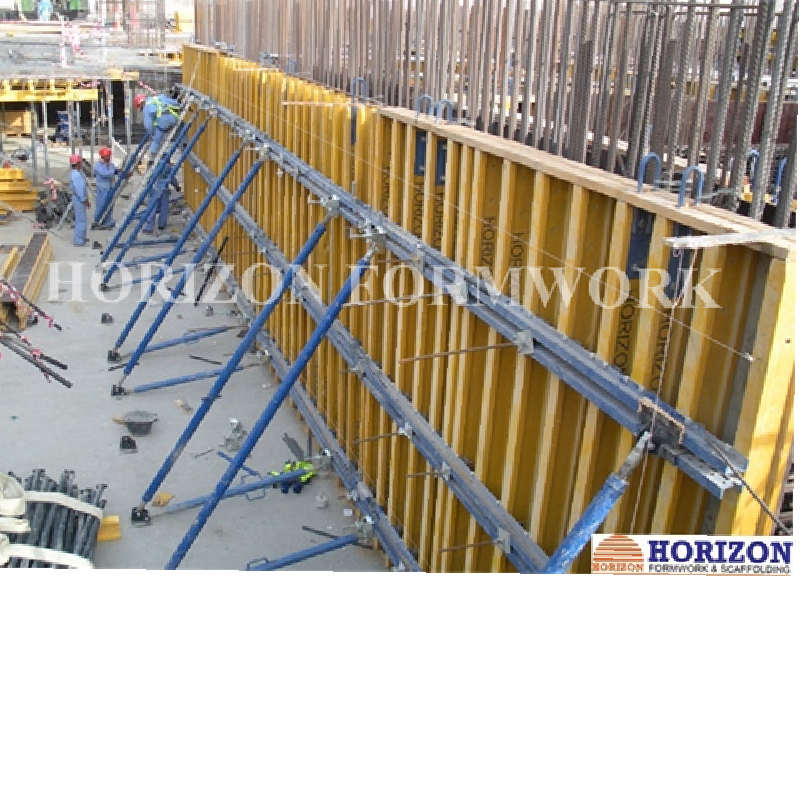Dec . 11, 2024 05:46 Back to list
Plastic Formwork Systems Manufacturer for Efficient Concrete Construction Solutions
The Evolution of Plastic Concrete Formwork Systems A Game Changer in Construction
In the ever-evolving landscape of construction technology, plastic concrete formwork systems have emerged as one of the most innovative solutions to improve efficiency, reduce costs, and enhance the sustainability of building projects. As a manufacturer of these advanced systems, understanding the benefits and applications of plastic formwork is essential to appreciate its growing role in modern construction.
What is Plastic Concrete Formwork?
Plastic concrete formwork is a system used to mold concrete structures while providing support and shape during the curing process. Unlike traditional formwork that often uses wood or metal, plastic formwork offers a lightweight and flexible alternative. This innovation results from rapid advancements in materials science that have allowed for producing high-strength polymers capable of withstanding the rigors of concrete pouring and setting.
Advantages of Plastic Formwork Systems
1. Lightweight and Portable One of the standout features of plastic formwork is its lightweight nature. This quality makes it easier to handle and transport, reducing labor costs and improving the speed with which construction progresses.
2. Durability and Reusability Plastic formwork systems can withstand the harsh conditions found on construction sites. Their resistance to moisture, corrosion, and other environmental factors means they can be reused multiple times without significant deterioration. This attribute not only leads to cost savings but also aligns with sustainable building practices.
3. Efficient Design Plastic formwork allows for various architectural shapes, giving architects and engineers the freedom to design more complex structures. This flexibility expands the possibilities in architectural design and construction, enabling the creation of unique buildings that stand out visually.
4. Easy Assembly and Disassembly Traditional formwork can be time-consuming to assemble and disassemble, delaying projects. However, plastic formwork systems usually feature user-friendly interlocking mechanisms, speeding up the construction process while ensuring structural integrity.
5. Reduced Waste and Eco-Friendliness Traditional formwork materials like timber can lead to considerable waste, especially when the forms are not reused. In contrast, the plastic's reusability and dependability significantly reduce waste. Additionally, many manufacturers produce plastic formwork using recycled materials, further enhancing its eco-friendliness.
Applications in Construction
plastic concrete formwork system manufacturer

Plastic concrete formwork systems are versatile and can be applied across various construction projects. Their efficiency makes them suitable for residential buildings, commercial structures, infrastructure projects, and even precast concrete elements.
1. Residential Construction For building homes, plastic formwork offers a quick and adaptable solution. The reduced weight allows for less robust supporting infrastructure, which is particularly advantageous in smaller residential projects.
2. Commercial Structures In larger buildings such as offices and shopping centers, where complex designs are common, plastic formwork provides the flexibility needed to achieve intricate forms while ensuring structural integrity.
3. Infrastructure Projects From bridges to tunnels, the durability of plastic formwork systems makes them ideal for infrastructure applications. The ability to withstand adverse environmental conditions allows for long-lasting structures.
4. Precast Concrete Elements When creating precast products, plastic formwork can be used to form a variety of shapes efficiently and effectively, with smoother finishes and precise dimensions.
The Future of Plastic Formwork
As the construction industry continues to embrace sustainable practices and technological advancements, the demand for innovative materials like plastic formwork systems will likely rise. Manufacturers are continuously researching and enhancing these systems, focusing on improving their properties and expanding their applications.
Additionally, the integration of digital technologies in construction, such as Building Information Modeling (BIM), has opened new avenues for planning and executing projects. When coupled with plastic formwork systems, BIM can optimize workflows and improve project outcomes by predicting costs, timelines, and potential design issues.
Conclusion
Plastic concrete formwork systems are undoubtedly a significant advancement in the construction sector. By offering durability, efficiency, and environmental benefits, these systems represent a shift toward more sustainable building practices. As a leading manufacturer of plastic formwork, the commitment to innovation and quality will play a key role in shaping the future of construction, ensuring that projects are completed successfully, on time, and within budget. The continued evolution of these systems promises a more efficient and sustainable future for the global construction industry.
-
High-Quality U Head Jack Scaffolding – Reliable Scaffolding Jack Head Manufacturer & Factory
NewsJul.08,2025
-
High-Quality I Beam H20 Leading Timber Beam H20 Material Factory, Exporters & Manufacturers
NewsJul.08,2025
-
High-Quality Powder Coating Steel Formwork - Durable & Corrosion Resistant Solutions
NewsJul.07,2025
-
Inclined Column Formwork Supplier – Durable & Precise Solutions for Unique Structures
NewsJul.07,2025
-
High-Quality Water Stop Solutions Trusted Water Stop Company & Suppliers
NewsJul.07,2025
-
High-Quality Formwork Material Supplier Reliable Manufacturer & Factory Solutions
NewsJul.06,2025